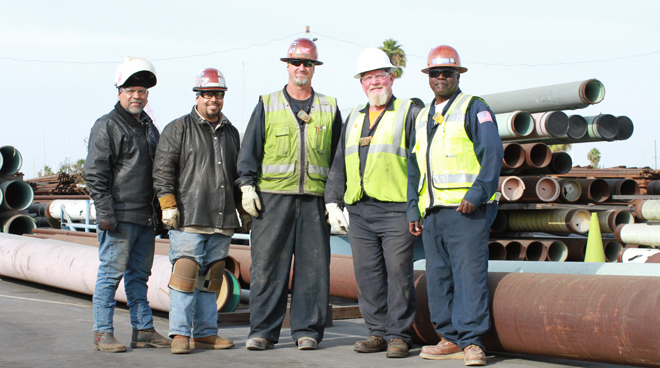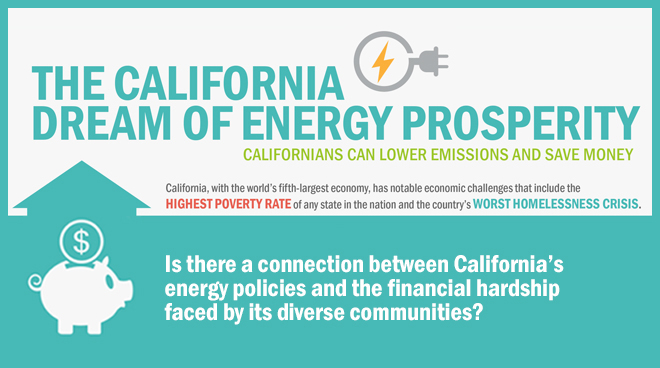A History of Economic Growth and Jobs: Oil and Natural Gas Fuel the California Economic Engine
California oil and natural gas mean growth. They mean jobs. And, Californians need ample, affordable and reliable energy to thrive – to power our homes, farms, businesses and schools, fuel our cars, and produce products that we need and use every day.
While other industries like entertainment and technology dominate headlines, the energy industry quietly elevates Californians to the middle class and provides affordable energy resources that improve the quality of our lives.
In 2015, the oil and natural gas industry’s economic activity in the state was valued at around $66 billion. About $33 billion of that supported jobs in a wide range of sectors including construction, manufacturing and public safety.
The oil and natural gas sector reflects California’s diversity.
Oil and natural gas have allowed hundreds of thousands of Californians to build companies and find meaningful work that has propelled them into the middle class. The industry directly employed 142,780 Californians from diverse backgrounds and all levels of the socio-economic spectrum, which translated into $19.9 billion per year in wages and salaries for oil and natural gas jobs. It offers jobs to workers of all education levels, including truck drivers, geophysicists, chemists and machinists.
The oil and natural gas sector reflects California’s diversity. Nearly a third of the statewide industry workforce is Latino, versus just 7 percent Latinos employed in science, technology, engineering and mathematics (STEM) industries according to Pew Research Center data. Over 13 percent of the oil and natural gas workforce is Asian and over 5 percent is African-American.
While many consider STEM the path to jobs of the future, the oil and natural gas industry creates job opportunities across the spectrum of educational attainment, regardless of economic background and access to higher education today. Statewide, one third of oil and gas workers have a high school diploma or less. The importance of an industrialized workforce cannot be discounted; not everyone can go to college, but everyone deserves the opportunity to ascend the economic ladder.
In California, the average annual oil and natural gas industry salary of $84,451 is nearly 40 percent more than the $61,276 average for other private industry jobs, according to a 2017 report by the Los Angeles Economic Development Corporation (LAEDC).
Statewide, one third of oil and gas workers have a high school diploma or less.
It is an industry with a long history of growth and investment in California, creating opportunities for professional growth and advancement.
An example of this is California Resources Corporation (CRC), which directly employs about 4,000 California workers and contractors.
CRC is the state’s largest independent oil and natural gas exploration and production company. All its operations and assets are in California, including more than 2 million acres of California land in the Sacramento, San Joaquin, Ventura, and Los Angeles basins. As a spin-off from Occidental Petroleum Corporation, which spent nearly a century operating in California, CRC has employed generations of Californians, from office workers in Long Beach to rig operators living in Bakersfield.
In California, the average annual oil and natural gas industry salary of $84,451
In total labor income alone, the oil industry injected $33 billion annually into the state’s economy, according to the LAEDC report. These salaries filter into the local economy through the vendors who work with the oil companies and the local businesses frequented by workers, including dry cleaners that launder their uniforms, favorite lunch spots and the mechanics who maintain their family vehicles. In 2015, the oil industry supported 368,100 jobs in the state and generated more than $148 billion in direct economic activity. That was a contribution of 2.7 percent of the state’s $2.4 trillion gross domestic product, the LAEDC report shows.
In addition, U.S. oil and natural gas companies pay more in taxes than the average manufacturing company. According to Standard & Poor’s research, in 2015 the oil and natural gas industry paid an average effective tax rate of 38.7 percent versus approximately 30 percent for other industries such as utilities, media, aerospace and defense and industrials.
In California, more than $26 billion in state and local taxes collected in 2015 can be attributed to the oil industry, including $28.5 billion in sales and excise taxes, according to the LAEDC report, all of which help fund essential services and infrastructure that Californians rely on every day.
Article

